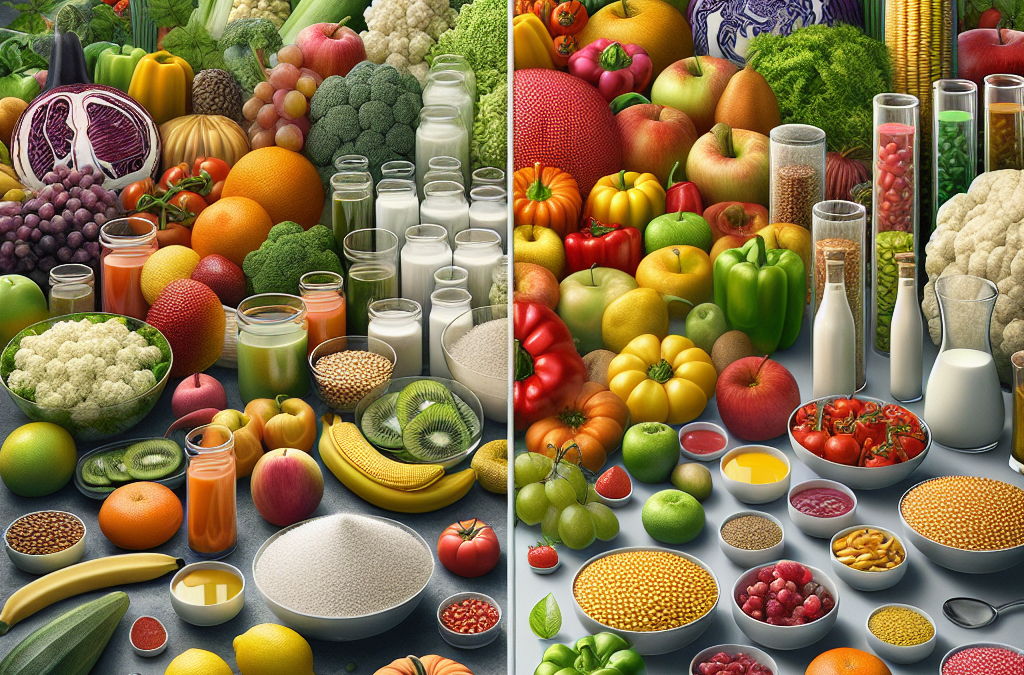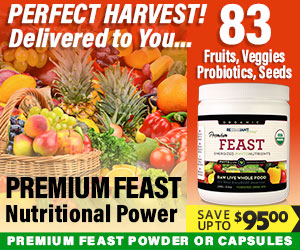1. Defining Organic Foods
What Are Organic Foods?
Let’s start from the ground up—literally! Organic foods are crops or livestock raised without synthetic fertilizers, pesticides, or genetically modified organisms (GMOs). What that really means is that they’re produced in harmony with nature, promoting biodiversity and ensuring that our food is as wholesome as possible. I remember the first time I bought organic veggies; it felt good knowing they were grown without all that synthetic junk!
In the organic farming world, practically everything adheres to strict guidelines. This includes not using artificial hormones in livestock or antibiotics to promote growth. The focus is on sustainability and ecological balance, which are values that resonate with many consumers today.
Shopping for organic items can also be a fun adventure. From farmer’s markets to health food stores, there’s a whole community that thrives around organic produce. It’s not just the food; it’s the experience of connecting with nature and people who share similar values.
Health Benefits of Organic Foods
Now, let’s talk health—who doesn’t want that? Studies suggest that organic foods can have more nutrients and fewer toxic residues. There’s this big buzz about antioxidant levels, too! It’s those little guys that help keep our cells healthy and protect us from diseases. I’ve personally noticed a difference in how I feel after switching to organic options, especially in fruits and vegetables.
Some people are especially sensitive to pesticides or additives in their food, leading to allergic reactions or other health issues. Organic foods have lower chemical residues, so if that’s your concern, organic might just be your best bet. I like knowing that my food isn’t laced with mystery chemicals!
Lastly, there’s the psychological perk I can’t ignore: buying organic often boosts my mood. It helps creating a sense of personal responsibility towards the environment and support for ethical farming practices. You just can’t put a price on that feel-good factor!
Regulations and Certification
The organic label isn’t just a fancy sticker—it actually involves rigorous regulations and certifications. In the U.S., the USDA oversees organic farming and ensures that producers meet specific standards. Getting that certified organic stamp is a badge of honor for farmers. When I see that label, I feel a wave of trust washing over me!
However, navigating these regulations can be tricky. Some consumers are a bit skeptical of the organic label, wondering if all organic produce is truly created equal. There are different levels of organic practices, which can complicate things. My advice is to not shy away from asking questions at your local farmers’ market!
Understanding these regulations brings a sense of empowerment when you shop. The more you know about what goes into your food, the better choices you can make for your family and yourself. After all, knowledge is power, right?
2. Understanding GMOs
What Are GMOs?
Let’s pivot to GMOs, short for genetically modified organisms. Unlike organic foods, GMOs involve altering the DNA of crops to achieve desirable traits, like resistance to pests or improved shelf life. This techy twist in agriculture has sparked loads of debates! I feel like at times, we’re in a sci-fi movie when we talk about genes and food.
It’s a way to address challenges like climate change and food security. GMOs can be a potential solution for feeding a growing population, especially when traditional farming methods face limitations. I don’t know about you, but the sheer science behind it fascinates me.
However, I get why many folks are cautious. With advancements in technology, ethical dilemmas and environmental concerns arise. It’s a packed topic, and to be honest, I still find myself learning more about it every day!
Pros and Cons of GMOs
So what’s the scoop on GMOs? On one hand, they can lead to significant yields, which is crucial when providing food for millions of hungry mouths. They’re often engineered for greater resistance to insects and disease, reducing the need for chemical pesticides. As someone interested in sustainable agriculture, this aspect really hits home.
On the flip side, there are concerns related to long-term health effects and environmental impact. Critics often cite potential risks to biodiversity and the emergence of superweeds that can resist herbicides. It’s tough to know who to trust with so much information out there swirling around. I truly believe in keeping an open discussion about it!
Ultimately, it’s about weighing the benefits and risks. For me, it’s essential to stay informed and make choices based on reliable information. Strike the balance that feels right for you and your family!
Labeling and Consumer Awareness
When it comes to GMOs, labeling plays a huge role in consumer choice. While organic foods are automatically labeled as such, GMO labeling varies widely. Some regions require clear labeling, while others leave consumers in the dark. Personally, I always appreciate knowing what’s on my plate, so I dig deeper into food labels whenever I can.
There’s also a growing movement toward transparency in food sourcing. Companies are becoming more aware that consumers want to know where their food is coming from and how it’s produced. I’ve noticed more brands proudly advertising whether their products are GMO-free, and I think that’s a step in the right direction.
Engaging with local communities and food producers can also foster a better understanding of these issues. I like to attend workshops and farmers’ markets because they offer a goldmine of information. Plus, there’s nothing quite like connecting with the people who grow our food!
3. The Environmental Impact
Organic Farming and Sustainability
When I think about organic farming, the concept of sustainability is front and center. Organic practices tend to enhance soil health, reduce pollution, and promote biodiversity. For me, knowing that my food choices help strengthen the environment feels really satisfying. It’s like giving back to Mother Nature!
Additionally, organic farms often implement crop rotation and cover cropping, which nourishes the soil. That way, they’re not just taking from the earth, but enriching it. Whenever I can, I support local organic farms because they embody that cycle of giving and receiving—it just makes sense to me!
While organic farming can take more land and labor for lower yields, the trade-off is worth it in environmental sustainability. I’ve grown to appreciate the intricacies involved in organic farming, which fosters an ecosystem that long-term benefits us all.
GMOs and Environmental Considerations
Now, shifting gears to GMOs, there’s a different kind of environmental narrative. GMO crops can slot into high-yield farming systems, which could minimize agricultural land use and make food production more efficient. It’s an interesting perspective that I don’t take lightly. After all, maximizing efficiency can lead to less deforestation if managed well.
However, the potential repercussions of using GMOs haven’t been fully realized. Some studies suggest that the heavy reliance on certain resistant crops can lead to biodiversity loss and ecosystem imbalance. It’s a lot to consider, and honestly, I often find myself weighing these aspects while shopping.
It’s a tough balance between innovation and sustainability, and that conversation is ongoing. Personally, staying open-minded about these discussions helps me identify what’s best for our planet and my health.
Public Perception and Education
A huge part of the organic versus GMO debate is public perception, influenced heavily by media coverage and education. I’ve seen how quickly misinformation can spread, which leads to misunderstandings about both sides. That’s why I value accurate education about food production. To make informed decisions, we’ve got to educate ourselves and listen to credible voices.
Get Certified Organic Whole Food Nutrition – Nutrient Dense Supplement
Engaging openly with friends or in community discussions allows for diverse opinions to emerge. Honoring those exchanges can foster a greater understanding of each perspective. I remember attending a webinar hosted by local farmers, and it shed some serious light on misconceptions surrounding both organic and GMO practices.
Empathy and communication are vital. The more we talk and learn together, the easier it becomes to forge a path forward that prioritizes both consumer preferences and environmental responsibility. Perhaps our evolution in understanding these foods can lead to solutions that work for everyone!
4. Cost and Accessibility
The Price of Organic Foods
I can’t ignore the elephant in the room—cost. Organic foods typically come with a heftier price tag due to the methods used in growing and producing them. Prices reflect the labor really put into maintaining sustainable farming techniques. However, every time I invest in organic products, I remember that the impact goes beyond just my plate.
Finding ways to make organic food more accessible is essential. Cooperative buying groups and community-supported agriculture (CSA) programs have become popular solutions. I signed up for a local CSA last summer, and it felt great to get fresh produce at a fraction of the price while supporting local farmers.
It’s also worth noting that the cost barrier often makes it tough for lower-income families to access organic options. Addressing food deserts and creating financial programs can go a long way in making healthy food accessible for all. Food justice is a personal passion of mine, and I believe healthy choices should be for everyone.
GMO Cost Considerations
GMO crops can often be less expensive than their organic counterparts. Farmers using GMO seeds might save money on pest control and labor costs, translating to lower prices for consumers. That’s crucial when you’re feeding a family on a budget. I totally get why many people may lean toward these options!
However, the market dynamics fluctuate with consumer demand. Awareness about GMOs could either boost or hinder their prevalence in the marketplace. It’s fascinating to see how public opinion shapes price trends, drawing me deeper into the conversation around food economics.
In essence, the accessibility of GMO foods often provides an immediate solution to price and availability, particularly in settings where organic options are scarce. Understanding this relationship can help us navigate our choices better.
Strategies for Affordable Healthy Eating
Eating healthy on a budget might seem like a wild challenge, but it’s totally manageable! I’ve found that planning meals around seasonal produce can lead to great savings. Farmers’ markets in the summer months always have deals on local organic produce. Who doesn’t like saving some cash while eating healthily?
Another tip is to explore bulk buying—whether it’s grains or canned goods. This approach can significantly reduce everyday costs while giving you a stockpile of healthy ingredients. When I did that with beans and grains, it felt like I hit the jackpot!
Ultimately, whether you buy organic or non-GMO, making conscious choices with budgeting in mind is key. Meal prepping and smart shopping make healthy eating accessible without breaking the bank.
5. The Future of Food: What’s Next?
Trends in Organic Farming
The organic sector is seeing a surge in interest! As a consumer, I’m stoked about how technology is becoming integrated into organic farming. From apps that help farmers track their crops to vertical farming innovations, it’s refreshing to see how we’re constantly evolving our approach to farming.
In essence, I believe sustainable farming practices will shape the products we see available in stores. People are becoming more aware of their food choices, which creates demand for organic and locally sourced foods. It just makes sense to cultivate connections between farmers and consumers!
This movement has given rise to a plethora of new brands and options on the market. It’s exciting to venture into stores and discover innovative products that prioritize both health and sustainability. Just the other day, I tried seaweed chips—a game-changer!
Advancements in GMO Technology
Meanwhile, GMO technology isn’t sitting idle, either. Ongoing research focuses on creating crops that can withstand extreme weather and disease. It’s fascinating to think about the potential of bioengineered foods to feed future generations. The whole concept makes me feel both excited and cautious, as we need to remain vigilant about safety and ethical aspects.
Moreover, there’s a rising interest in gene editing, where scientists can make precise changes to crops without transferring genes from other species. This tech can pave the way for healthier crops that require fewer resources. It’s a tight balancing act, and I find myself following this tightly!
As developers continue to work on these innovations, they’ll play a crucial part in shaping global food production. Staying educated and engaged in this field helps ensure that our voices guide how technology is integrated into our food systems.
Creating a Balanced Food Landscape
In the end, the conversation about organic foods and GMOs is just beginning, and I’m excited to be part of it! Both sides have merit, and the future could see a blend of both practices that caters to diverse needs and preferences. It’s about striking the right balance that serves our health, environment, and society.
Cultivating respect for various opinions while pushing for more transparency and sustainability can help us all reach a consensus. We’ve got to break bread together over these conversations, metaphorically speaking! Eating and discussing food should go hand-in-hand.
Ultimately, I’m convinced that the future of food is about informed choices, community, and collaboration. Let’s unify our efforts to support a vibrant, diverse food landscape that nourishes everyone—I’m totally here for that!
Frequently Asked Questions
1. What is the main difference between organic foods and GMOs?
The main difference lies in how they are produced. Organic foods are grown without the use of synthetic pesticides or fertilizers, while GMOs have had their DNA altered to enhance certain traits, such as pest resistance and longevity.
2. Are organic foods healthier than GMOs?
While many people believe organic foods are healthier due to lower pesticide residues and potential higher nutrient levels, it can vary. Both types of foods can provide valuable nutrients, and individual dietary needs play a significant role.
3. Is organic food more expensive than GMO food?
Generally, organic foods tend to cost more due to the growing practices involved. However, GMO foods can also be less expensive, as their production often leads to higher yields and lower production costs.
4. How do I know if what I’m buying is organic?
In the U.S., certified organic products will have the USDA Organic label. This label ensures that the product meets specific standards for organic farming practices.
5. What are the future trends in food production?
The future trends include advancements in both organic farming practices and GMO technology. We may see more integration of technology into sustainable farming and better transparency about food sourcing and production methods.
Get Certified Organic Whole Food Nutrition – Nutrient Dense Supplement
Related Content
- The Ultimate Guide to 10 Effective Organic Digestive Health Tips for 2025
- Best Organic Detox Juices Local in French Woods, New York 13783
- 10 Effective organic skin health foods (2025 Guide) to glowing skin
- Best Organic Detox Supplement in Venice California
- The Ultimate Guide to 10 Effective Organic Prebiotic Foods for 2025




